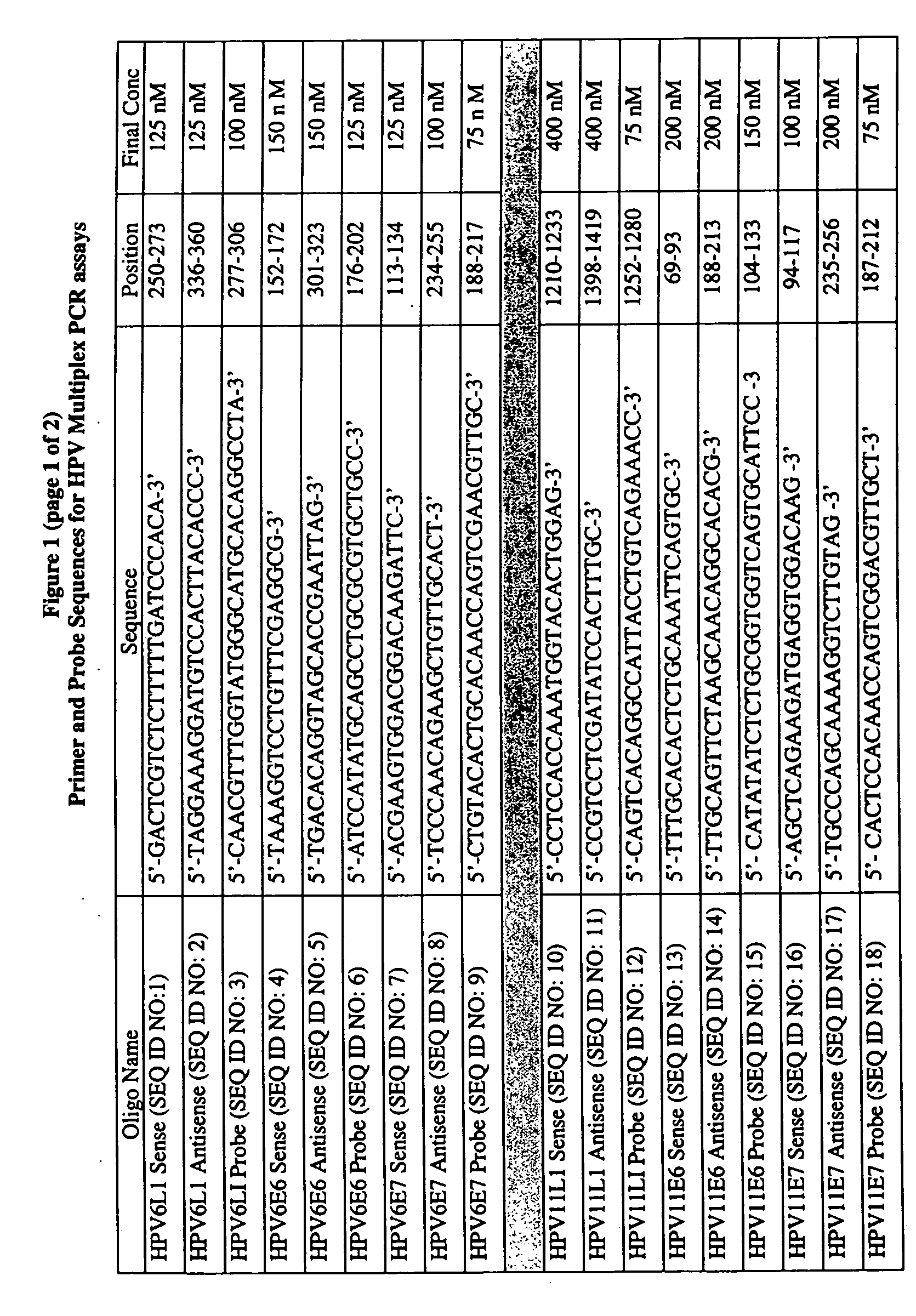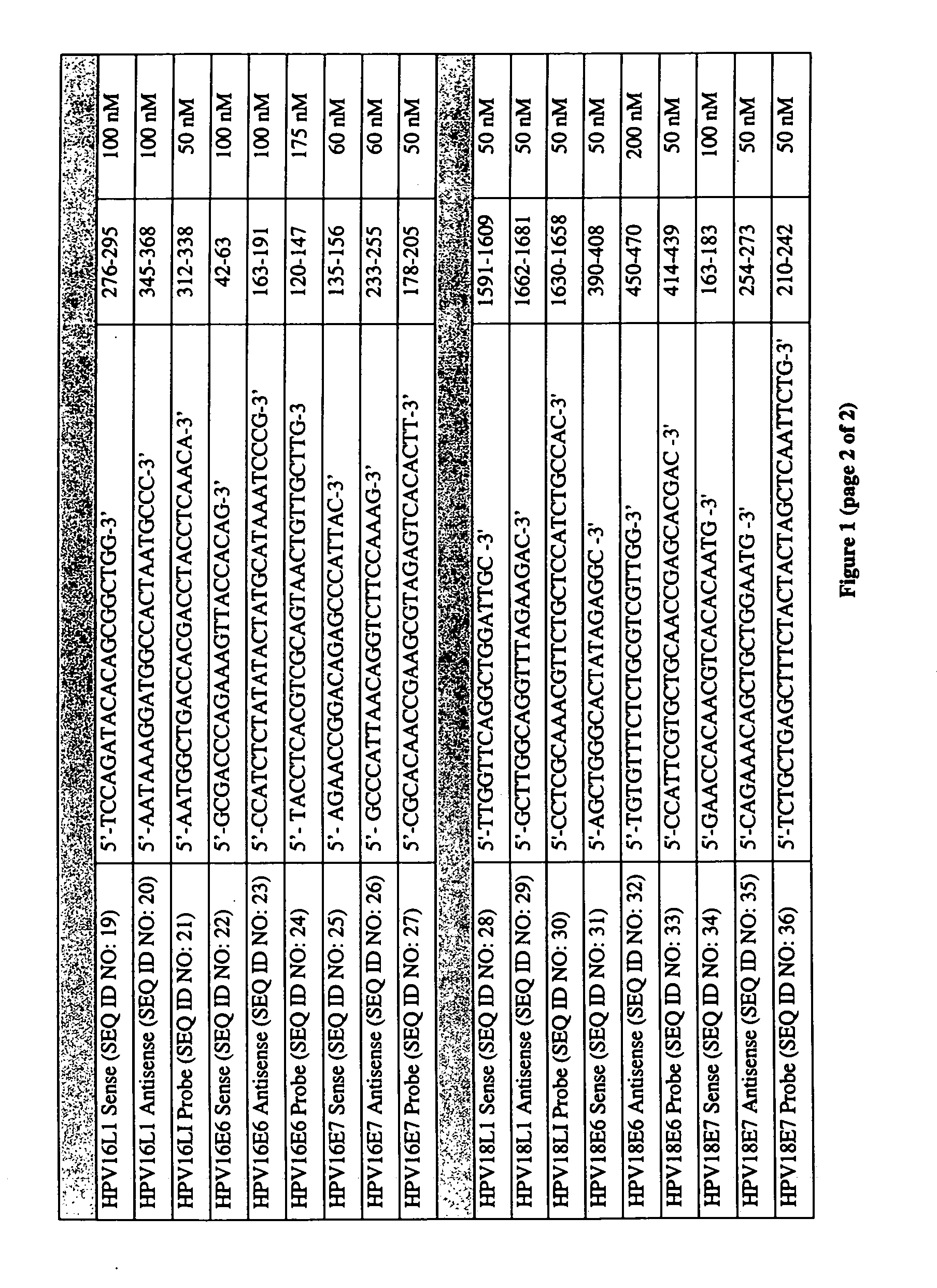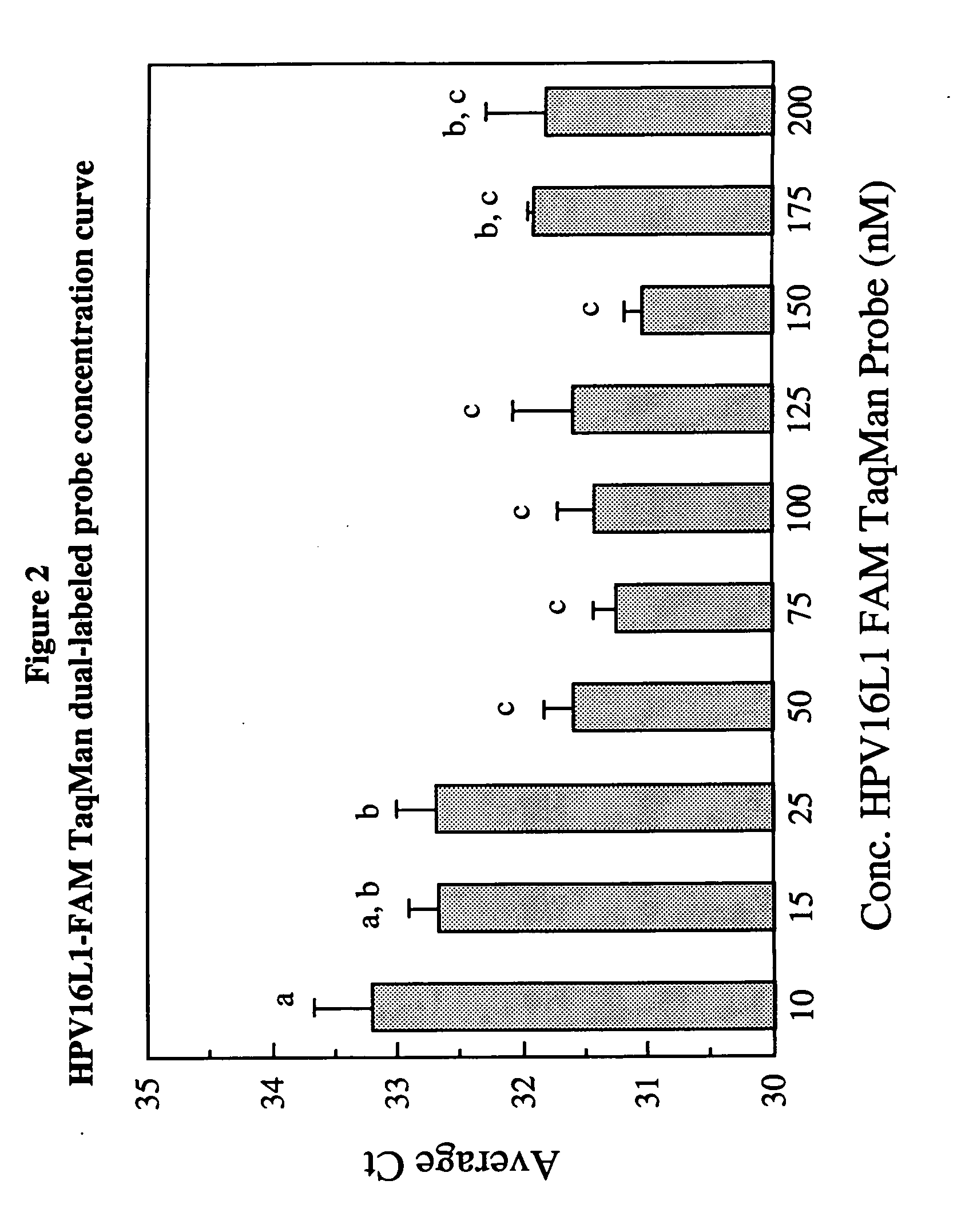Fluorescent multiplex hpv pcr assays using multiple fluorophores
a fluorophores and fluorescence technology, applied in the field of pcrbased assays, can solve the problems of disproportionate amplification of some subtypes relative to others, false positives excessively, and the association of the pcr methods described abov
- Summary
- Abstract
- Description
- Claims
- Application Information
AI Technical Summary
Benefits of technology
Problems solved by technology
Method used
Image
Examples
example 1
Discriminatory HPV Primer Design
[0141] PCR primers were designed for each HPV subtype using Primer Express v. 1.0 (PE Applied Biosystems, Foster City, Calif.). The gene-specific nucleotide sequences of the open-reading frames of the L1, E6 and E7 loci of the HPV6a, HPV6b, HPV11, HPV16, HPV18, HPV31, HPV33, and HPV45 subtypes were aligned using ClustalW v.1.7 (European Molecular Biology Laboratory, Heidelberg, Germany) and a Power Macintosh G4 personal computer (Apple Computer). The Phylip-format alignment file was then imported into the Allelic Discrimination module of the Primer Express application and the specific HPV subtype was marked.
[0142] Primer pairs were selected that met the following criteria: Tm=59-61° C., amplicon size: 100-250 bp, GC content between 20-80%, a guanosine or cytosine residue at the 3′-terminal position, and the discriminatory base within the three 3′-terminal bases. The discriminatory base is the residue that is unique for the specific HPV subtype at t...
example 2
Synthesis and Labeling of Oligonucleotide Primers and Probes
[0146] The oligonucleotide primers were custom synthesized and reverse-phase HPLC-purified by Sigma Genosys (The Woodlands, Tex.). The dual-labeled oligonucleotide probes were custom synthesized and reverse-phase HPLC-purified by Biosearch Technologies (Novato, Calif.). The oligonucleotide fluorescent probes for the L1 loci were 5′-labeled with 6-carboxy-fluorescein (FAM), the oligonucleotide fluorescent probes for the E6 loci were 5′-lableled with 6-carboxy-4′,5′-dichloro-2′,7′-dimethoxyfluorescein (JOE) and the oligonucleotide fluorescent probes for the E7 loci were 5′-lableled with 5-tetrachloro-fluorescein (TET), available from Molecular Probes (Eugene, Oreg.). All oligonucleotide probes were 3′-labeled with BHQ1, a non-fluorescent quencher developed by Biosearch Technologies (Novato, Calif.). The lyophilized primers and probes were reconstituted in 1×TE pH 8.0 buffer (Roche Molecular Biochemicals) and the concentrati...
example 3
Optimization of the Multiplex Reaction
[0147] Primer and probe concentrations were optimized so that three separate loci could be simultaneously detected and amplified in a single PCR tube without favoring one reaction over another. The fluorescent oligonucleotide probe concentrations were optimized separately by assessing the threshold cycle (Ct) and ΔRn of increasing probe concentrations using 100 copies of DNA template (each locus cloned into a plasmid) on the ABI PRISM® 7700 Sequence Detection System instrument.
[0148] Samples were amplified in a 50 μL reaction mixture containing 25 μL of the TaqMan Universal PCR 2×PCR Master Mix (Applied Biosystems, Foster City, Calif.), 200 nM final concentration of each primer, 100 copies of plasmid DNA template, DEPC-treated water (Ambion) and a range of concentrations (25-200 nM) of fluorescently-labeled oligonucleotide probes. The cycling conditions consisted of an initial step of 50° C. for 2 min followed by 95° C. for 10 min, and 45 cyc...
PUM
| Property | Measurement | Unit |
|---|---|---|
| Fluorescence | aaaaa | aaaaa |
Abstract
Description
Claims
Application Information
 Login to View More
Login to View More - R&D
- Intellectual Property
- Life Sciences
- Materials
- Tech Scout
- Unparalleled Data Quality
- Higher Quality Content
- 60% Fewer Hallucinations
Browse by: Latest US Patents, China's latest patents, Technical Efficacy Thesaurus, Application Domain, Technology Topic, Popular Technical Reports.
© 2025 PatSnap. All rights reserved.Legal|Privacy policy|Modern Slavery Act Transparency Statement|Sitemap|About US| Contact US: help@patsnap.com



